When we were looking into buying an RV I will admit that I was very worried about driving one of these monsters. The test drive we did before we bought allayed my fears a bit. It was far from relaxing. I had a death grip on that steering wheel and probably needed a shower afterwards but I knew I could get use to it.
Between the time we bought the RV and actually picked it up I tried to find some driving courses for big RVs. The closest I could find were for large delivery trucks. Most were for getting your Class A license to drive a transport truck. In the US, some RV dealers do run RV specific courses.
The most useful thing I did find was a set of online videos.
I have watched them many times and taken many notes, which I even now look over occasionally.
Keeping in Your Lane
Now the RV looks huge when you stand beside it. With the car behind, it is 56 feet long and over 12 feet tall but those don’t really matter when you are driving. It is the width.
Initially the biggest problem I had was keeping in my lane. The RV is 101 inches wide and the minimum width for an interstate highway is 144 inches. Now 40 inches of leeway may seem like a lot but that is less than 2 feet on each side when you are centered. It looks like much less when you are driving. Lots of the secondary road are even smaller and with no shoulders if you make a mistake.
One trick I learned from the videos was to put a piece of tape low on the windshield to mark where the center line of the road should be when you are centered in your lane.
I NEVER take my eyes off the road and always keep both hand locked on the wheel (sometimes very tightly). If I need anything I always get Jennie to hand it to me.
Wind
The RV is really a giant sail. You REALLY have to watch the wind as you can get blown out of your lane very easily.
An especially bad place is going down a hill into a river valley. The road down is usually notched into the valley wall so you are protected from the wind. Then you cross the bridge at the bottom and get blasted by the winds from the side.
Head and tail winds do not really affect the drive very much other than the change in gas mileage.
As I said in the posts when driving across the prairies, driving in a cross winds is very tiring, especially if they are gusty. You are constantly turning the steering wheel to counteract the changing side force. Sometimes I have to turn so much I can actually hear the tires squealing because they are actually running a bit sideways.
Another thing to watch for is being passed by transport trucks. As they come up behind you they have a bow wave that pushes you to the shoulder. Then as they pass you get sucked back towards the center in the vacuum behind the bow wave.
Mirrors
You really learn to use your side mirrors in the RV. Obviously you have no rear view mirror and the rear monitor is not much use because it is mainly for backing up and can only see about 30 feet behind the RV.
The mirrors on my RV are mounted out the side windows as in a car. Some RV’s have them mounted out front so you can see them through the windshield. I think I would have preferred this because it is less of an eye movement to check them but I am not sure if having part of my windshield view blocked would bug me.
Each mirror has a flat section and a convex section below it. The convex section covers most of the view beside the RV but there is still a small blind spot just behind my shoulder on the drivers side. The blind spot on the passenger side is much larger as a car can easily hide there and I wouldn’t know it. The side view cameras help but to activate them I have to put on my turn signal which can scare people when they think I am going to turn into them.
There is also a large blind spot directly behind the RV where again a car can easily hide without me knowing it is there but this is less of a problem unless they suddenly pop out to pass.
I have just learned to always check the mirrors to know what cars are around me and coming up beside me.
Lane Changes
Lane changes in traffic are just about the scariest maneuver. I always try to make these as far in advance as possible to wait for an open spot and can move over when I know there is no one beside me.. Having the GPS warn of upcoming changes helps.
Sometimes, though, a lane ends without warning in heavy traffic and you just have to get over. In this case I just put on the turn signal and hope people let me in. People are usually kind of intimidated and get out of the way either from fear or kindness. In these cases I usually get Jennie to check the blind spot if I have to move right.
Knowing when a car is far enough behind you so that you can move over is also a challenge. The view in even the “flat” mirror is slightly distorted so objects do appear closer. In this case I usually use the wide view in the backup camera to tell me that the car is far enough back.
I also use the monitor to tell me that I am passed someone on the rare occasions that someone is driving slower than me and I have to pass them.
Turns
In the RV, as with all long vehicles, you have to make very wide turns and usually take more than one lane to make a 90 degree turn.
As with cars the turns basically pivot on the back wheels but in this case the back wheels are almost 30 feet behind you so you go way past where you normally think you start your turn.
On tight turns near other things you also have to watch as there is almost 10 feet of RV behind the rear wheels that can swing out quite far. I am especially careful around gas pumps.
The turning radius on the RV is not bad. I think I could do a U turn in about 4 to 5 lane widths.
The videos had a lot of tips on turning and it is now second nature.
Another weird thing is that sitting up so high and a bit back from the front of the RV, there is about 10 feet on the ground in front that you cannot see. In tight places making turns it feels like you are driving right up on top of things when you really still have a lot of room.
Speed and Cruise Control
The RV is speed limited to about 70 mph but it gets downright scary from all the wobbling going down hills at anything over 65.
On an empty highway my usual cruising speed is about 55 mph or 90 kph. The RV feels nice and solid and the engine is not struggling too much.
The only times I go faster is in heavy traffic where it is best to keep up with the flow or when there are a lot of trucks on the road. I usually pick a truck and try and match it’s speed. I don’t mind forcing cars to pass me but trucks are another matter.
The engine is strong enough to keep a constant speed in high gear in all but a heavy headwind on a flat road. Going up even a slight hill will usually make it downshift. I have read that this engine is OK with high RPM but going up steep hills I usually let it downshift but never let the RPM go over about 4000 and just crawl up at usually about 35 mph or about 60 kph. At that speed I can get up just about any hill without straining the engine too much. On two lane highways I know I annoy the drivers behind me but what can you do. Most highways have turnouts of some kind if there are a lot of hills.
If I am going down a valley I usually speed up on the downhill to have some extra momentum for the uphill.
I have also learned to really watch for the little speed limit signs they post for curves. I always slow down to the suggested speed because if you hit one too fast the lean in the RV is quite unsettling. I don’t want to learn what it would take to tip it.
The RV has a cruise control but I rarely use it. It usually downshifts so much to maintain the speed on even the smallest hill that the engine is screaming. I do use it on long flat stretches as it gets better gas mileage that I can because it feeds just enough gas to maintain the speed.
To control my speed on long down hills, the RV has what is called “tow/haul” mode. You activate it via a button on the gear shift. If you hit the brakes going down a hill, the transmission will downshift to try and use engine compression to slow the RV. You can then let off the brakes and the RV will usually maintain its speed. If you brake some more or the speed starts increasing it will downshift some more. The engine is usually screaming but not using any gas and you are saving your brakes.
Towing
With an RV this big you just have to tow a vehicle to use to do your sightseeing. There are lots of interesting places to go that the RV would just not fit.
As I have said before, we just happened, 11 years ago, to buy the Honda CRV which is one of the few vehicles that can be towed with all wheels on the ground. Jeeps and Saturns seem to be the other ones we always see.
To tow it we had to take it to hitch dealer and they basically take the front off the car to add what is called a base plate that attaches to the car frame and projects to pins through the front so that we can attach the tow bar that is connected to the trailer hitch on the RV.
We also had to a a light socket added to the front and the required wiring and diodes to light the CRV’s tail lights and turn signals to match those on the RV. In our case it is not really necessary as the lights on the RV can be seen over the roof of the CRV.
The two black cables are safety cables to drag the CRV along behind us in case the tow bar ever detaches. The blue cable is for the lights.
The tow bar attaches to the front of the CRV with pins. The arms are extendable and have the rubber sleeves on them so that the CRV doesn’t have to be in exactly the right spot to attach the bar. Once the bar is attached I back up the CRV until the bars are fully extended and they lock in place.
The little red wire is attached to the brake controller I will talk about below. If the CRV becomes detached it will cause the controller to lock the brakes on the CRV to quickly stop it.
With the tow bar removed the modifications are not that noticeable.
On some older bars, the tow bar stayed with the car instead of the RV so you drive around with this massive thing attached to your front bumper.
These tow bar are not cheap. The bar and base plate and installation cost me almost $2000.
When you tow something over a certain weight (can’t remember the number) it needs to have its own brakes that activate when the tow vehicle’s do. I had to buy the box that sits on the floor and clamps onto the CRV’s brake pedal. It has a piston and an air compressor and pushes against the driver seat. It must also have some sort of accelerometer because without any direct connection to the RV brakes it senses when I brake and applies varying amounts of brake pressure to the CRV pedal.
It is bit of a pain in the neck to take it in and out each time but it only takes a minute or two. You can buy built in units that go under the hood and use the cars own hydraulics to activate the brakes but neither type are cheap (this one was $1200) and the CRV is old so I wanted a portable unit.
Backing Up
With the car attached you never back up. When being towed the CRV’s steering wheel must be unlocked so the front wheels can follow the turns of the RV. If you back up they could flop to one side and you could wreck the steering, pushing the wheels sideways. I have heard that some people put a second person in the towed car to hold the wheel but others have said this is dangerous as they say the flop can happen quickly and you could break a finger or wrist.
If you do get into a situation where you must backup you disconnect and then reconnect the car.
When I do backup, such as into a campsite, I never make a move unless Jennie is behind me telling me exactly what to do. The mirrors and monitor help but it is very hard to judge distances. At the campsites we stop on the road, discuss where we want to end up and then staying in sight in my side mirror she uses hand signals to guide me. We have come up with a set of unambiguous signals that work for us. If I ever lose sight of her I stop immediately.
Getting Gas
The main problem with getting gas is that you can’t back up. A lot of stations these days have convenience stores and you drive up to the pumps facing the store. There is almost never enough room for me to get to the pumps and then move forward and turn, missing the cars parked at the store. So we never go to this kind of station.
We always look for stations where the pumps are parallel to the road but even some of the smaller ones of these don’t work, as the entry or exit is too close to the pumps and I can’t make the turn to get next to them.
Since we have to be so choosy I usual start looking for a station soon after we use half a tank. A full tank can take me about 500 miles or 800 kilometers.
Another problem at gas stations is pre-pay only pumps. If you pre pay with a credit card you can usually only (only he says) pump $100 of gas. With a 75 gallon or 285 litre tank even half a tank is over that with prices these days. So you have to go into the station and ask them to remove the prepay only from your pump, go and pump your gas and then go back and pay.
Waiting for that much gas to pump is kind of boring too.
Finally
After saying all this it must seem that it very scary to drive but it is not. It just demands constant attention. Due to this we usually limit our drives to from 2 to 4 hours. This works out as we arrive at our next campground just after lunch and still have time to do some exploring.
I won’t say it is fun to drive, as it is just a big lumbering brick on the road but I am much more relaxed now and don’t mind driving it at all, even on the twisty roads.
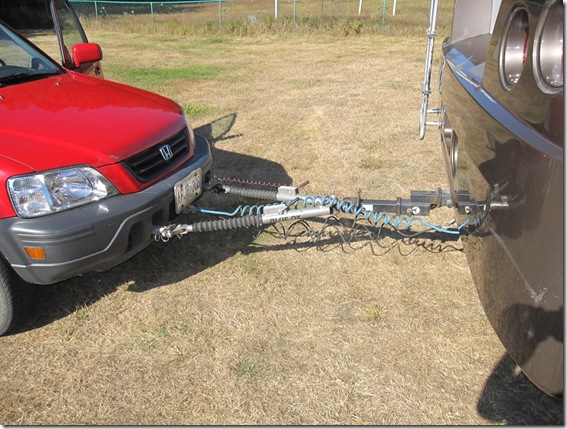
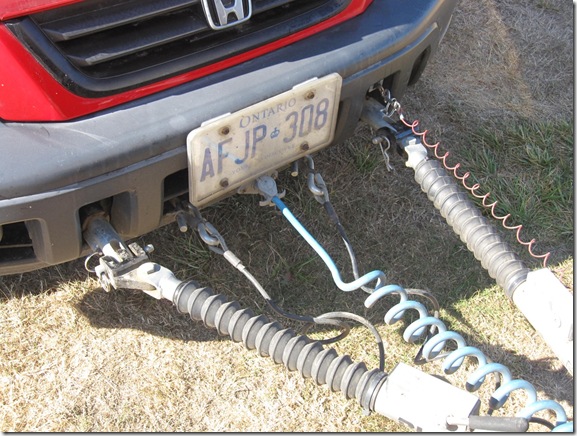
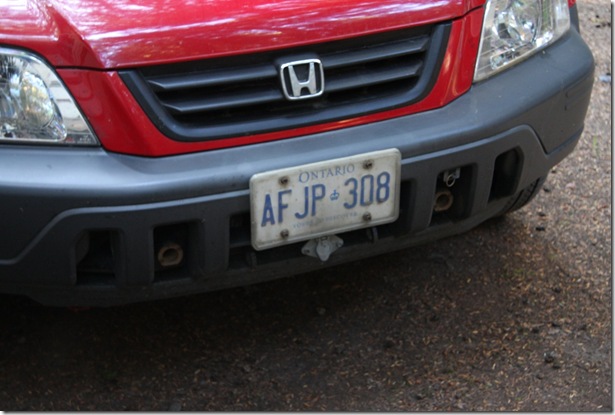
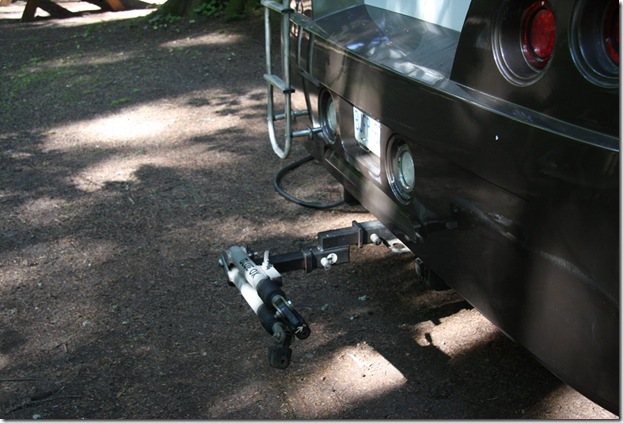
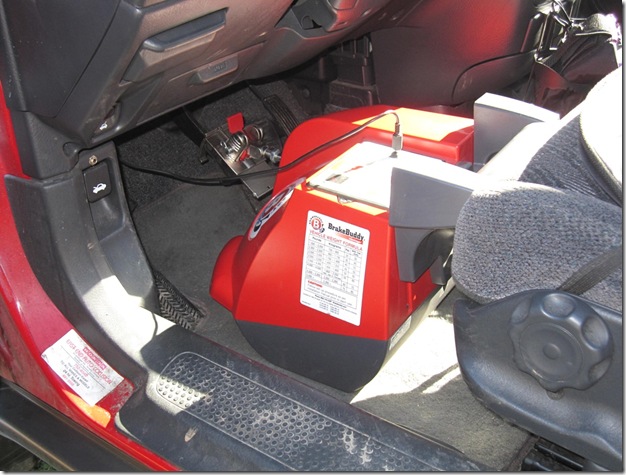
No comments:
Post a Comment